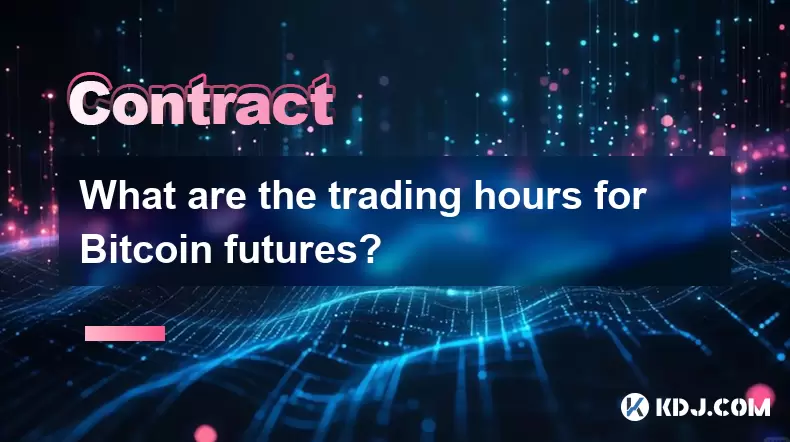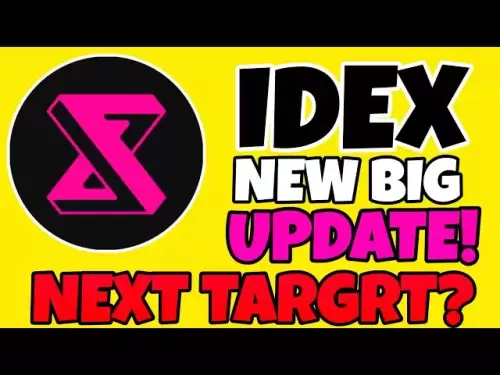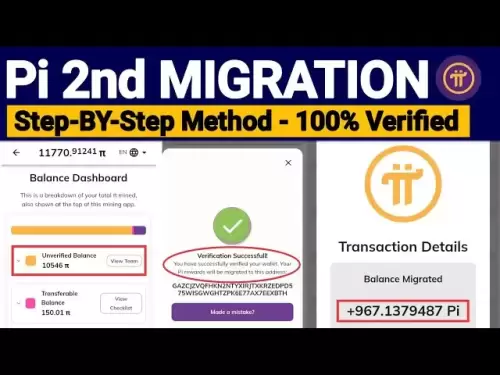-
 Bitcoin
Bitcoin $117,991.5647
-0.03% -
 Ethereum
Ethereum $2,966.4808
0.18% -
 XRP
XRP $2.8076
0.64% -
 Tether USDt
Tether USDt $1.0003
0.00% -
 BNB
BNB $689.9050
-0.63% -
 Solana
Solana $162.0407
-0.80% -
 USDC
USDC $0.9999
0.00% -
 Dogecoin
Dogecoin $0.1995
-1.51% -
 TRON
TRON $0.3001
-1.21% -
 Cardano
Cardano $0.7426
3.25% -
 Hyperliquid
Hyperliquid $47.7978
2.84% -
 Stellar
Stellar $0.4411
16.52% -
 Sui
Sui $3.4267
0.15% -
 Chainlink
Chainlink $15.3148
0.07% -
 Bitcoin Cash
Bitcoin Cash $506.5880
-1.91% -
 Hedera
Hedera $0.2222
12.41% -
 Avalanche
Avalanche $21.2049
1.67% -
 UNUS SED LEO
UNUS SED LEO $9.0606
-0.19% -
 Shiba Inu
Shiba Inu $0.0...01325
-0.86% -
 Toncoin
Toncoin $2.9979
0.32% -
 Litecoin
Litecoin $94.3717
1.13% -
 Polkadot
Polkadot $3.9873
-0.29% -
 Monero
Monero $336.1497
0.92% -
 Dai
Dai $0.9999
-0.01% -
 Uniswap
Uniswap $8.5189
-0.60% -
 Ethena USDe
Ethena USDe $1.0005
-0.04% -
 Pepe
Pepe $0.0...01236
-0.92% -
 Bitget Token
Bitget Token $4.4002
-0.23% -
 Aave
Aave $303.5433
1.05% -
 Bittensor
Bittensor $391.1314
-0.35%
Understanding the Bitcoin futures term structure
Bitcoin futures term structure shows how contract prices vary with expiration dates, reflecting market expectations, funding costs, and sentiment.
Jul 13, 2025 at 08:28 am

What is Bitcoin Futures Term Structure?
The Bitcoin futures term structure refers to the relationship between the prices of Bitcoin futures contracts with different expiration dates. This concept is crucial for traders and investors who seek to understand market expectations regarding Bitcoin's future price movements, volatility, sentiment, and funding costs. In traditional finance, the term structure reflects interest rates, storage costs, and convenience yields, but in cryptocurrency markets, it primarily reflects speculative positioning, funding rates, and macroeconomic sentiment.
The term structure can be visualized as a curve plotting the prices of futures contracts across varying maturities. When analyzing this structure, two key phenomena are often observed: contango and backwardation, both of which have implications for trading strategies and risk management.
Contango and Backwardation Explained
In the context of Bitcoin futures, contango occurs when longer-dated futures contracts trade at higher prices than shorter-dated ones. This typically signals that market participants expect the price of Bitcoin to rise over time or that holding costs—such as financing and opportunity costs—are factored into the contract pricing.
Conversely, backwardation is when near-term futures contracts are priced higher than those expiring later. This condition may indicate that holders of Bitcoin are willing to pay a premium to maintain their positions or that immediate demand outweighs long-term optimism.
Understanding whether the market is in contango or backwardation helps traders determine optimal entry and exit points. It also informs decisions about rolling futures positions or holding spot assets.
How to Analyze the Bitcoin Futures Curve
Analyzing the Bitcoin futures term structure involves several steps:
- Collect Data: Obtain real-time or historical data on Bitcoin futures contracts across multiple exchanges like CME, Binance, or OKX.
- Plot the Curve: Use charting tools to plot the futures prices against their respective expiration dates.
- Identify Trends: Look for patterns such as steepening (increasing spread between short and long-dated contracts) or flattening (reducing spread).
- Compare with Spot Price: Overlay the current spot price of Bitcoin to assess the premium or discount offered by futures contracts.
- Track Over Time: Monitor how the curve evolves with changes in market conditions, regulatory news, and macroeconomic indicators.
Each of these steps provides insight into how institutional and retail traders perceive the future value of Bitcoin and how they adjust their exposure accordingly.
Factors Influencing Bitcoin Futures Term Structure
Several factors shape the Bitcoin futures term structure:
- Market Sentiment: Bullish or bearish outlooks significantly affect futures pricing. Positive developments like ETF approvals or adoption by large institutions can steepen the curve into contango.
- Funding Rates: On perpetual futures platforms, funding rates reflect the balance between long and short positions. High positive funding rates can push up near-term futures prices.
- Interest Rates: Changes in fiat interest rates influence the cost of capital used to hold leveraged positions.
- Volatility Expectations: Increased volatility expectations tend to widen spreads between contract maturities.
- Regulatory Environment: Announcements from regulators can cause abrupt shifts in the term structure due to uncertainty or increased compliance costs.
These variables interact dynamically, making the term structure a living indicator of market psychology and economic forces.
Practical Applications for Traders and Investors
For active traders, understanding the Bitcoin futures term structure opens up several strategic opportunities:
- Calendar Spreads: Traders can profit from the difference in price movement between two contracts of the same asset with different expiration dates.
- Roll Yield Analysis: By evaluating the gains or losses incurred when rolling a position forward, traders can optimize their timing.
- Hedging Exposure: Institutional investors use futures to hedge their spot holdings based on the slope of the curve.
- Arbitrage Opportunities: Mispricing between spot and futures or between different exchanges can be exploited using arbitrage strategies.
Each of these applications requires a deep understanding of how the term structure behaves under different market conditions and what drives its fluctuations.
Common FAQs About Bitcoin Futures Term Structure
Q1: Can Bitcoin futures ever trade below the spot price?
Yes, especially during periods of strong short-term bearish sentiment or when there is an oversupply of leverage longs being liquidated.
Q2: How does the term structure differ across exchanges?
Exchanges vary in terms of liquidity, funding rate mechanisms, and user demographics. As a result, the shape of the term structure can differ between platforms like Binance, BitMEX, and CME.
Q3: Does the term structure predict Bitcoin’s actual future price?
While it reflects market expectations, the futures term structure is not a guaranteed predictor of future spot prices. Market surprises can render predictions inaccurate.
Q4: Is it possible for the term structure to switch between contango and backwardation frequently?
Yes, especially in volatile markets like Bitcoin. Rapid shifts in sentiment or external shocks can lead to frequent transitions between the two states.
Disclaimer:info@kdj.com
The information provided is not trading advice. kdj.com does not assume any responsibility for any investments made based on the information provided in this article. Cryptocurrencies are highly volatile and it is highly recommended that you invest with caution after thorough research!
If you believe that the content used on this website infringes your copyright, please contact us immediately (info@kdj.com) and we will delete it promptly.
- Crypto, Gold, and Bitcoin: A New York Minute on the Digital Gold Rush
- 2025-07-13 20:30:16
- Crypto iGaming in India: JetTon, LunarBet, and the Evolving Landscape
- 2025-07-13 20:50:16
- XRP Price, Whales, and Payment Tokens: A New Era for Crypto?
- 2025-07-13 20:35:16
- Justin Sun, Tron, and Fee Reduction: A New Era for the Network?
- 2025-07-13 21:10:11
- Shiba Inu, Little Pepe, and the $1 Dream: A Meme Coin Showdown
- 2025-07-13 20:50:17
- XRP Price Gears Up: Will Accumulation Lead to a $7 Breakout?
- 2025-07-13 21:10:12
Related knowledge

Psychology of trading Bitcoin contracts
Jul 13,2025 at 02:50am
Understanding the Emotional Rollercoaster of Bitcoin Futures TradingBitcoin contract trading, especially in the form of futures, introduces a high lev...

Best time of day to trade Bitcoin contracts?
Jul 13,2025 at 05:29am
Understanding Bitcoin Contracts and Their VolatilityBitcoin contracts, particularly futures contracts, are derivative instruments that allow traders t...

How to use Fibonacci levels in Bitcoin contract trading?
Jul 13,2025 at 08:07am
Understanding Fibonacci Levels in TradingFibonacci levels are a technical analysis tool used by traders to identify potential support and resistance z...

Understanding the Bitcoin futures term structure
Jul 13,2025 at 08:28am
What is Bitcoin Futures Term Structure?The Bitcoin futures term structure refers to the relationship between the prices of Bitcoin futures contracts w...

What are the trading hours for Bitcoin futures?
Jul 13,2025 at 12:14pm
Understanding Bitcoin Futures Trading HoursBitcoin futures are derivative contracts that allow traders to speculate on the future price of Bitcoin wit...

How to withdraw profits from a futures account?
Jul 13,2025 at 07:07am
Understanding Futures Accounts and Withdrawal MechanicsIn the cryptocurrency space, a futures account is used to trade contracts that derive their val...

Psychology of trading Bitcoin contracts
Jul 13,2025 at 02:50am
Understanding the Emotional Rollercoaster of Bitcoin Futures TradingBitcoin contract trading, especially in the form of futures, introduces a high lev...

Best time of day to trade Bitcoin contracts?
Jul 13,2025 at 05:29am
Understanding Bitcoin Contracts and Their VolatilityBitcoin contracts, particularly futures contracts, are derivative instruments that allow traders t...

How to use Fibonacci levels in Bitcoin contract trading?
Jul 13,2025 at 08:07am
Understanding Fibonacci Levels in TradingFibonacci levels are a technical analysis tool used by traders to identify potential support and resistance z...

Understanding the Bitcoin futures term structure
Jul 13,2025 at 08:28am
What is Bitcoin Futures Term Structure?The Bitcoin futures term structure refers to the relationship between the prices of Bitcoin futures contracts w...

What are the trading hours for Bitcoin futures?
Jul 13,2025 at 12:14pm
Understanding Bitcoin Futures Trading HoursBitcoin futures are derivative contracts that allow traders to speculate on the future price of Bitcoin wit...

How to withdraw profits from a futures account?
Jul 13,2025 at 07:07am
Understanding Futures Accounts and Withdrawal MechanicsIn the cryptocurrency space, a futures account is used to trade contracts that derive their val...
See all articles

























































































